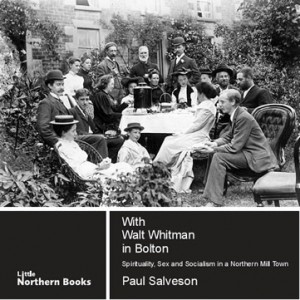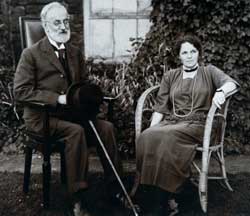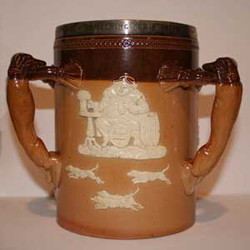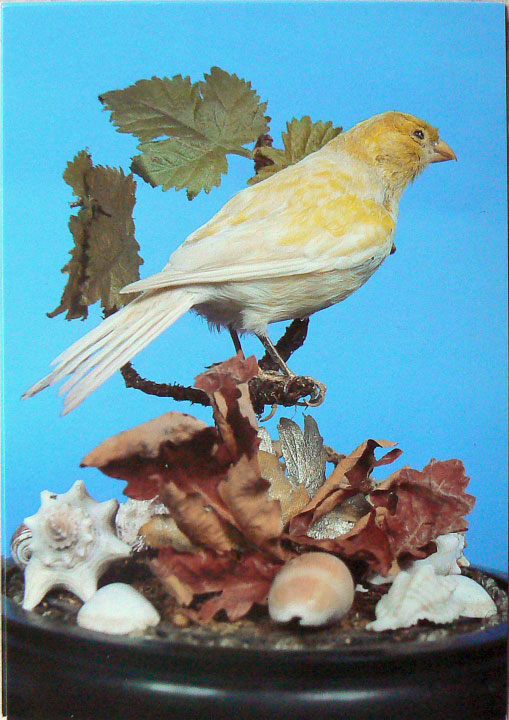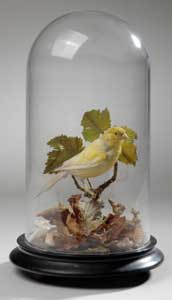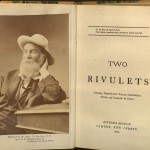Now, before you start jumping into questions like what in the world a canary has anything to do with America’s Good Gray poet, first think about what it means to be loved and admired. Just like in today’s pop culture, where famous stars would be flocked about with roaring fans and paparazzi, back in the day, Walt Whitman also had admiring followers of his own. One of the more popular groups was the aficionados in Bolton, England.
The Bolton group was a small body of twenty-some men and woman who devoted their Sundays to admire and revere Whitman and his works. However, they were not just there merely to read and discuss his works. Their affections for Whitman grew into a type of idolization of Walt Whitman. They nearly thought of him as a “kind of god,” “the new Messiah” (Reynolds 583). Led by two of Whitman’s British friends, Dr. John Johnston and J.W. Wallace, their camaraderie revolved around a sense of “excessive adulation and cloying nostalgia” (Reynolds 583). During that time, Whitman and one of America’s leading agnostic figures, Robert Ingersoll, had been exchanging a clash of thought with regards to the question of afterlife. Though these two individuals had an affinity for each other since they “both rejected formal religion and espoused a humanistic faith that owed much to modern science,” “saw Darwinian evolution as a source of hope, not pessimism,” and “were boosters of American industrial expansion,” at the same time, they disagreed when it came to the question of afterlife (Reynolds 580). Therefore, during this time, when Whitman came across Johnston and Wallace, they were not only able to bring him a sense of religious consolation, but Whitman in turn, became a personal comfort for the recent death of Wallace’s dear dead mother. In this sense, Wallace seemed to feel a stronger connection to Whitman.
Soon thereafter, Wallace and Johnston had influenced another devotee of Whitman to formulate another Bolton group even in other continents like Australia. Like Wallace and Johnston, Bernard O’Dowd led a group of men and woman in celebrating the works of Whitman with religious intensity. In the end, with the help of Whitman’s admirers, it led to the founding of a Whitman “church” (Reynolds 581).
So now that we’ve touched upon a bit about the star, Walt Whitman, now we must observe how the fans had “[celebrated] the birth of Walt Whitman” (Reynolds 584). Like today, as many fans would dedicated personalized fan-sites, shrines, and create certain days that would celebrate their idols’ birthdays, Whitman’s admirers were not any less different.
Four of the major dedications they came up with are the following:
- The Celebration of Walt Whitman’s Birthday, May 31
- The Whitman Collection
- Mazinaw Rock
- The Stuffed Canary
May 31st
Like all true fans, one must know their idol’s birthday. Becoming the most famous day within the calendar of the Boston Fellowship, May 31st, Whitman’s followers to this day, celebrate Walt Whitman’s birthday in an atmosphere of an open tea party. They pass around Whitman’s Loving Cup as a symbol of dedication and homage to Whitman. In 2008, the Whitman Fellowship celebrated 25 years of continued meetings where the celebration will continuously take place annually (“Walt Whitman and Bolton”).
The Whitman Collection
Even after the death of Walt Whitman, the Bolton Archive and Local Studies Services have continued to collect publications dedicated to Whitman to this day.
Mazinaw Rock
Located in Bon Echo Park, Ontario, Canada, Mazinaw Rock was a rock with an inscription dedicated to Walt Whitman to celebrate the Centenary of his birth in 1919. The inscription reads as thus: “’Old Walt. 1819 – 1919 Dedicated to the democratic ideals of Walt Whitman by Horace Traubel and Flora Macdonald. ‘My Foothold is tenon’d and mortised in granite, I laugh at dissolution and I know the amplitude of time’.”
The Stuffed Canary
Last but not least, one of Whitman’s highly prized devotion was for his pet, canary. The bird was stuffed following its death, and now a spot in the Whitman Collection at Bolton Museum, the largest archive outside the United States.
Whitman had even dedicated a poem to his canary, which was published on March 2, 1888 in the New York Herald:
***
My Canary Bird
Did we count great, O soul, to penetrate the themes of mighty books,
Absorbing deep and full from thoughts, plays, speculations?
But now from thee to me, caged bird, to feel thy joyous warble,
Filling the air, the lonesome room, the long forenoon,
Is it not just as great, O soul?
Walt Whitman (1819 – 1892)
~*~*~*~*~*~*~
Works Cited
Reynolds, David S. Walt Whitman’s America: A Cultural Biography. New York: Vintage Books, 1995.
“Walt Whitman and Bolton.” Bolton Museum and Archive Service. Bolton Council. 10 June 2009 <http://www.boltonmuseums.org.uk/bolton-archives/walt-whitman/>.
“With Walt Whitman in Bolton – Spirituality, Sex and Socialism in a Northern Mill Town.” Little Northern Books <http://littlenorthernbooks.co.uk/with_walt_whitman_in_bolton_book.php>.
